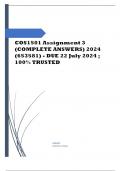ADMIN
[COMPANY NAME]
, Question 1 Complete Marked out of 2.00 Question 2 Complete Marked
out of 2.00 QUIZ Suppose U = {1, 2, 3, 4, 5, a, b, c} is a universal set
with the subset A = {a, b, c, 1, 2, 3, 4}. Which one of the following
relations on A is NOT functional? a. {(1, 3), (b, 3), (1, 4), (b, 2), (c, 2)}
b. {(a, c), (b, c), (c, b), (1, 3), (2, 3), (3, a)} c. {(a, a), (c, c), (2, 2), (3, 3),
(4, 4)} d. {(a, c), (b, c), (1, 3), (3, 3)} Suppose U = {1, 2, 3, 4, 5, a, b, c}
is a universal set with the subset A = {a, b, c, 1, 2, 3, 4}. Which one of
the following alternatives represents a surjective function from U to A?
a. {(1, 4), (2, b), (3, 3), (4, 3), (5, a), (a, c), (b, 1), (c, b)} b. {(a, 1), (b,
2), (c, a), (1, 4), (2, b), (3, 3), (4, c)} c. {(1, a), (2, c), (3, b), (4, 1), (a, c),
(b, 2), (c, 3)} d. {(1, a), (2, b), (3, 4), (4, 3), (5, c), (a, a), (b, 1), (c, 2)}
Question 3 Complete Marked out of 2.00 Question 4 Complete Marked
out of 2.00 Question 5 Complete Marked out of 2.00 Let G and L be
relations on A = {1, 2, 3, 4} with G = {(1, 2), (2, 3), (4, 3)} and L = {(2,
2), (1, 3), (3, 4)}. Which one of the following alternatives represents the
relation L ○ G = G; L? a. {(2, 3), (3, 3)} b. {(1, 2), (2, 4), (4, 4)} c. {(1,
2), (2, 1), (3, 3), (4, 4)} d. {(2, 4), (4, 4)} Let g be a function from Z (the
set of positive integers) to Q (the set of rational numbers) defi ned by (x,
y) ∈ g iff y = (g ⊆ Z x Q) and let f be a function on Z defi ned by (x, y)
∈ f iff y = 5x + 2x – 3 (f ⊆ Z x Z ). Consider the function f on Z . For
which values of x is it the case that 5x + 2x – 3 > 0? Hint: Solve 5x + 2x
– 3 > 0 and keep in mind that x ∈ Z . a. x < 5, x ∈ Z b. < x <1, x ∈ Z c. x
≥ 1, x ∈ Z d. x < 1, x ∈ Z + 4x − 3/7 + + 2 + + + 2 2 + + 3/5 + + + Let g
be a function from Z (the set of positive integers) to Q (the set of rational
numbers) defi ned by (x, y) ∈ g iff y = (g ⊆ Z x Q) and let f be a
function on Z defi ned by (x, y) ∈ f iff y = 5x + 2x – 3 (f ⊆ Z x Z ).
Which one of the following is an ordered pair belonging to f? a. (–1, 0)
b. (2, 21) c. (1, 5) d. (3, 44) + 4x − 3/7 + + 2 + +
Question 1




